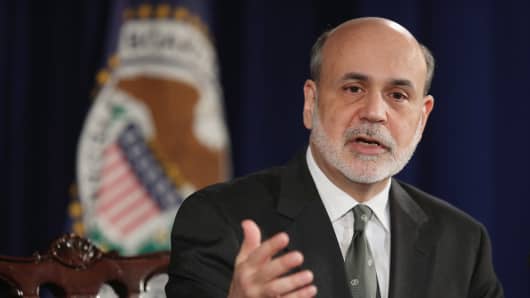The minutes of the Federal Open Markets Committee's March meeting were released to everyone at 9 a.m. ET Wednesday instead of their anticipated release at 2 p.m. ET. The Fed acknowledged that a select few received the minutes sometime after 2 p.m. ET on Tuesday.
The people who did get the email were mostly lobbyists employed at banks, according to sources at several banks. Perhaps the lobbyists for Bank of America just don't know the person who assembled the list.
The purpose of the email list is still unclear. The information in the email gets posted to the Fed's website. So no one should need it personally delivered to their inbox. Perhaps, as a courtesy to lawmakers with supervisory responsibilities over the Fed, it makes sense to send it to the Capitol Hill staffers. But why would lobbyists for banks get special treatment?
And why would Bank of America and Pimco not qualify for special treatment?
Anyone in early possession of the minutes would have been able to see that they revealed a Fed more divided about its bond buying programs than previously known. A bank would have had plenty of time to put on short positions and profit from the slump in Treasury bonds that followed the official release. As far as I can tell, there would have been nothing illegal about this trading.
So not being on the list possibly put Pimco and Bank of America at a competitive disadvantage.
We do not know if this distribution list was assembled ad hoc for the most recent Fed minutes or if it is a regular channel of information dissemination by the Fed. If it is a regular channel, what sort of information goes to this group? And what was the criteria for assembling who is on the list?
I've put these questions to the Fed. I also asked Bank of America and Pimco. None of them has responded. When I get the answers, you will, too.



